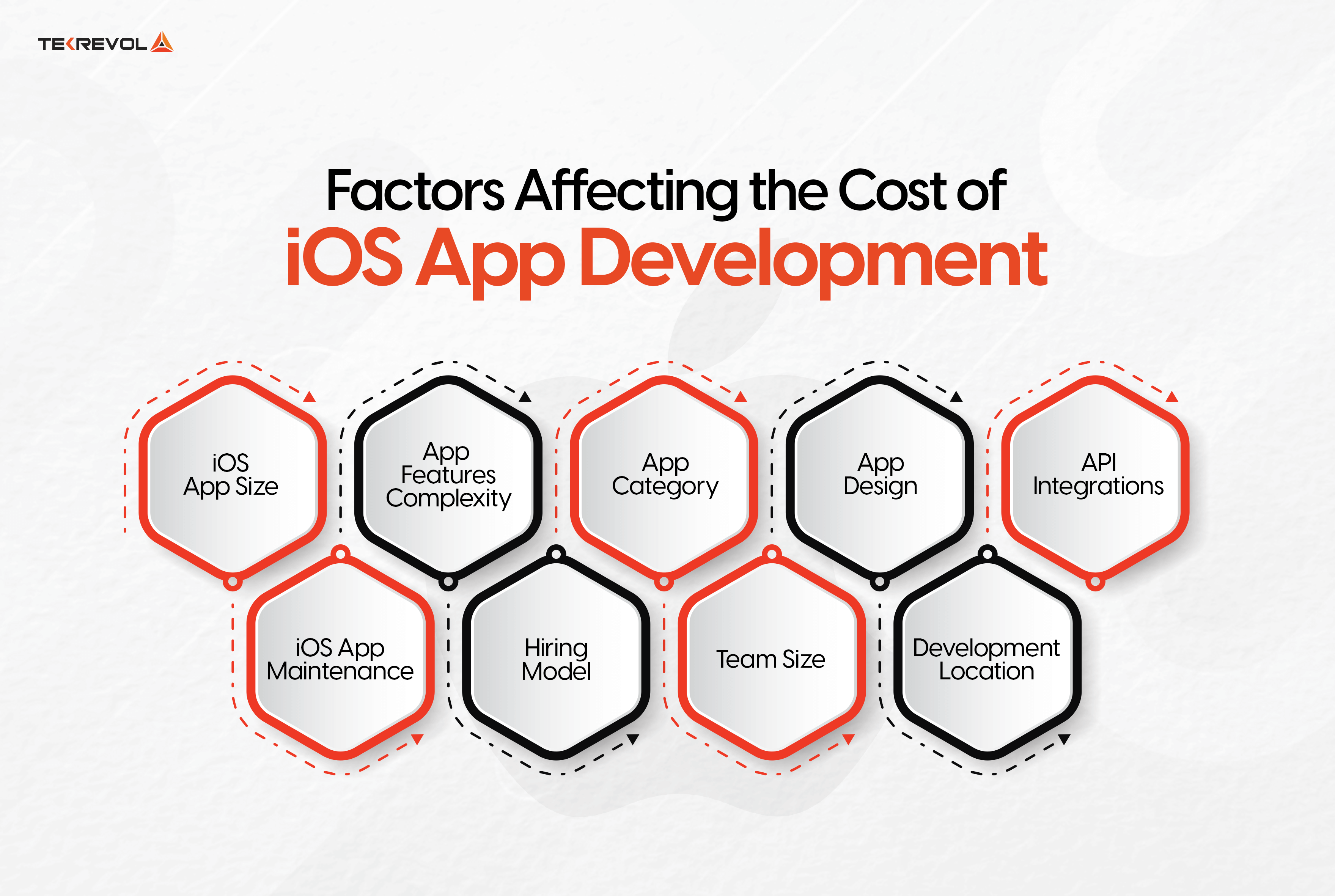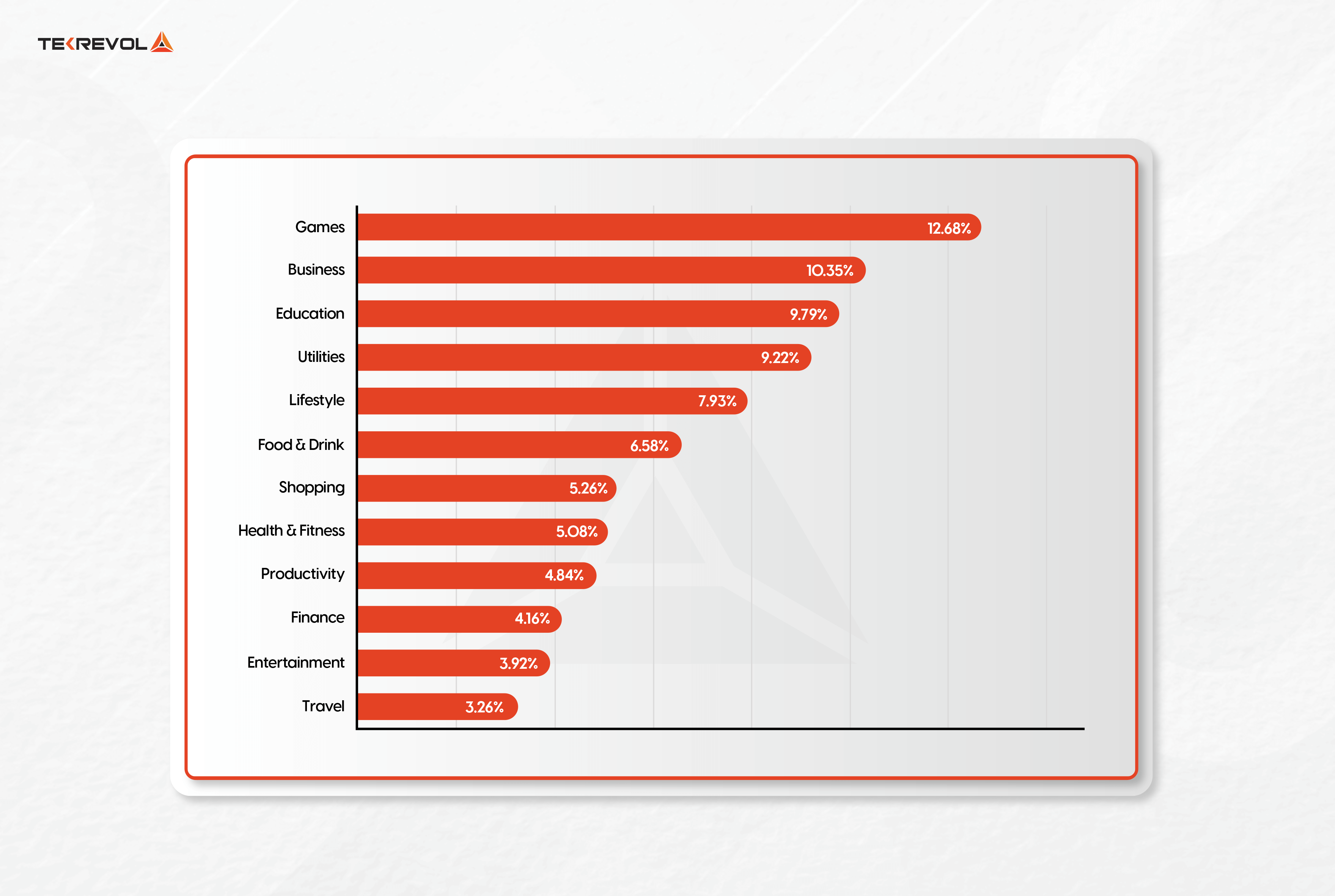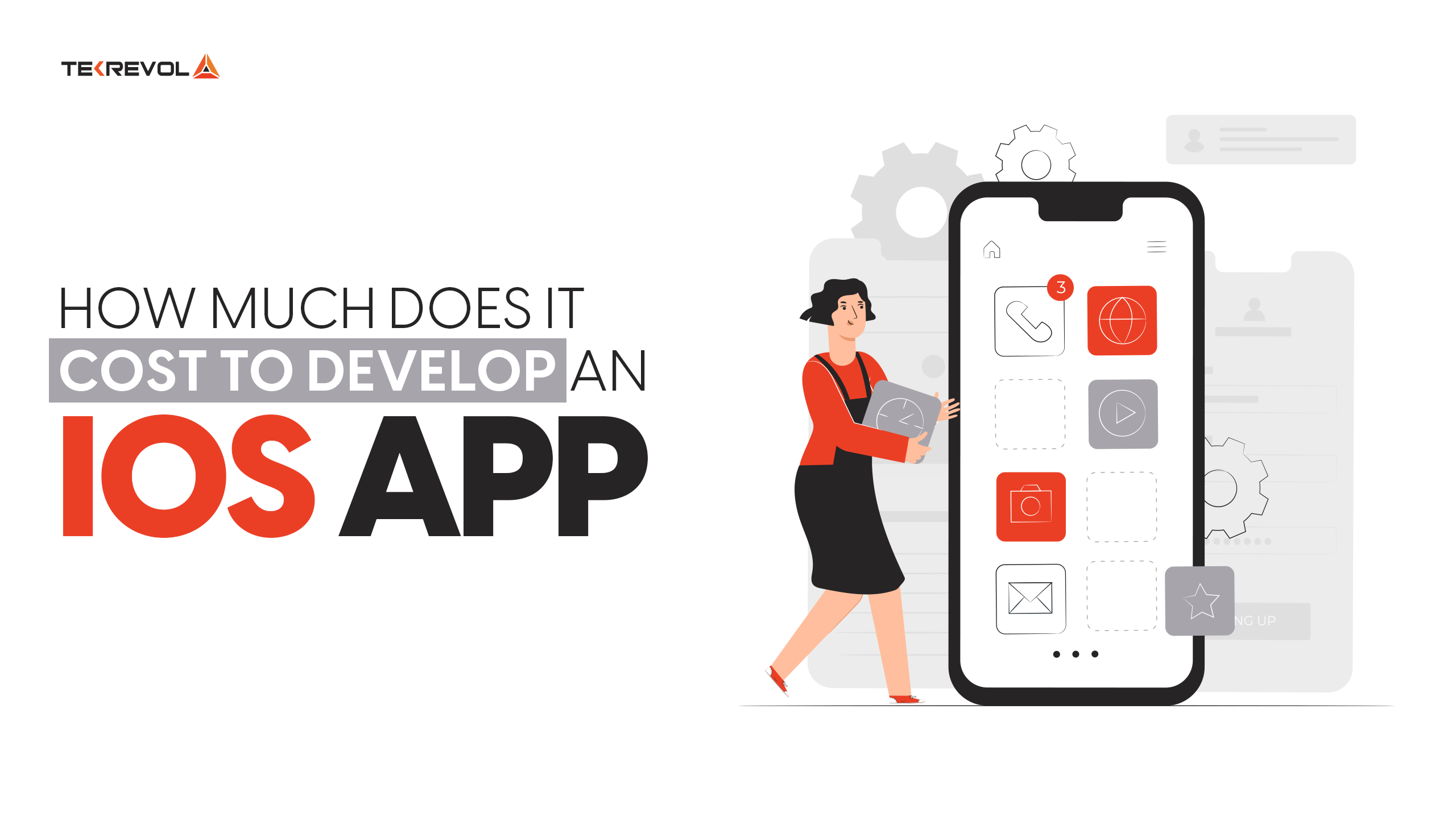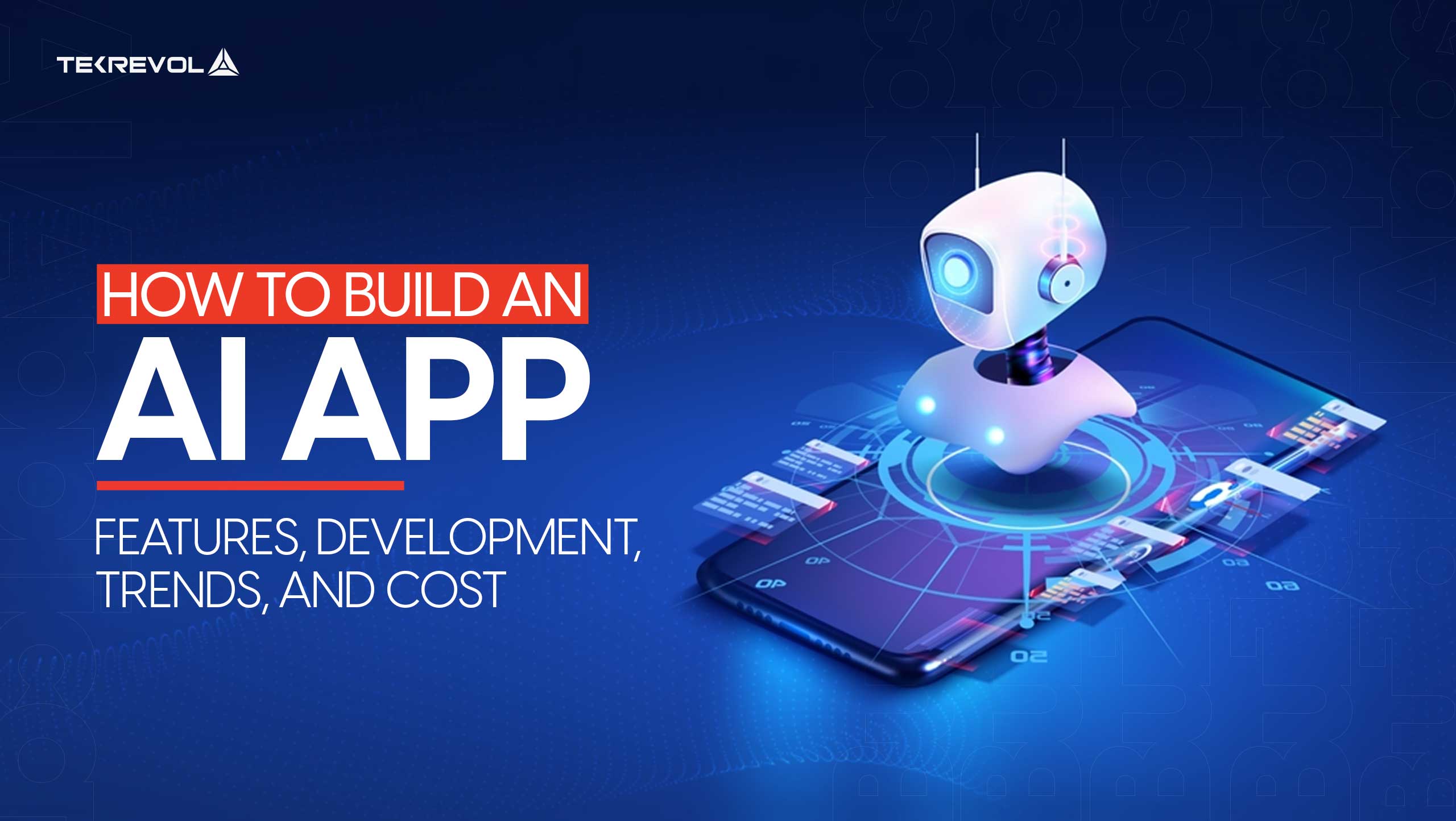Choosing to pursue iOS as your platform for mobile app development is a strategic move. Once you have decided, the very next question that might arise is, “How much does it cost to build an iOS app”. On average, the iOS app development cost varies from around $50,000 to $700,000 subject to different aspects.
Obviously, you are here to determine a more precise figure for your iOS app development. So let’s move further..
Nowadays, the mobile app development market has become quite saturated, making the investors and stakeholders unsure about their investment in the product they aim to build. Meanwhile, the internet is jam-packed with numerous cost estimations, making it even harder to determine the iOS app development cost.
But don’t worry, we are here to rescue you from all the uncertainties regarding the cost of iOS app development, and in this blog, we will settle this subject once and for all. It will also make it easier for you to hire an iOS app development company.
Although iOS apps are considered more expensive as compared to Android app development, there are multiple factors involved that affect the overall development cost of an iOS app. Whether it’s the app category, complexity, or any other factors, each one has its own share in the pricing of iOS applications.
In this article, we’ll walk you through the insights on the factors that affect the cost of iOS app development with precise figures. Further, you’ll explore the other hidden aspects and backgrounds that add up to the over-budget of the iOS app.
Let’s start with a simple trick to have a precise estimation of iOS app development cost!
Calculator Formula For Average iOS App Development Cost In 2025
Here’s a formula for calculating the cost of developing an iOS app that we have derived to help you estimate your iOS app budget considering the major factors that hold the major share of the overall budget.
iOS App Development Cost = UI/UX Development Hours + App Platform + [Hourly Rates of Developers x Development Time]
This cost calculator formula for iOS apps will get you started with determining at least the rough expense for your product. Meanwhile, there are some crucial factors like the app complexity, app types, feature requirements, app design, development team size, and other possibilities.
So, let’s take a deeper look into the core of these factors to clear out the confusion and estimate the cost of your iOS app in a precise manner.
- Do you want to find out the true cost of developing an iOS app?
- Use our app development cost calculator for a more precise figure!
- Let’s Calculate!
iOS App Development Cost Breakdown: Key Factors
To have a ballpark average of the iPhone app development cost, we can say it depends on several factors involved in iOS app development.
However, what’s noteworthy here is that it depends on a lot more things than you can think of.
So, here’s the iOS app development cost breakdown influenced by some crucial factors that collectively make an overall budget for the app.

Factor- 1: iOS App Size
The size of an iOS app directly impacts development costs. Large-scale applications with more features and content require more development time and resources. That’s why they cost more than the regular apps.
Meanwhile, smaller apps are less expensive as they have limited functionalities. The size of an app can be optimized by balancing the functionalities based on efficient coding practices that will result in low expenses for your iOS app.
Here is a checklist to determine the iOS app development cost average as per the size:
| iOS App Size | Average Development Time | Average Development Cost |
|---|---|---|
| Small app development cost | 2-4 months | $10,000-50,000 |
| Medium app development cost | 4-8 months | $50,000-100,000 |
| Complex app development cost | 8+ months | $100,000+ |
Factor- 2: iOS App Features Complexity
The complexity of features in an iOS app holds a major influence on development costs. Usually, basic apps tend to be less expensive as they only focus on essential features in the development process.
However, apps with medium or complex features require more time and resources which increases the overall costs. Developers and stakeholders need to understand the levels of feature complexity as it will help them to plan out the budget much more accurately.
Now, let’s define the features for the three complexity levels of iOS app development:
1. Basic iOS App Features:
- User Authentication: Basic login and authentication functionality.
- User Interface (UI): Simple and intuitive interface design with limited features.
- Core Functionality: Basic features essential for app functionality, such as displaying information or performing simple tasks.
- Database Integration: Integration with a basic database for storing and retrieving user data.
- Push Notifications: Basic push notification support for alerts and updates.
2. Medium iOS App Features:
- Enhanced User Authentication: Advanced authentication methods like social media login or biometric authentication.
- Custom UI Elements: Custom-designed UI elements for improved user experience.
- Additional Functionality: Medium-level features like in-app messaging, search functionality, or payment processing.
- Advanced Database Integration: Integration with more advanced databases for managing large datasets or complex data relationships.
- Analytics Integration: Integration with analytics tools for tracking user behavior and app performance.
3. Complex iOS App Features:
- Advanced User Authentication: Multi-factor authentication, role-based access control, or user management features.
- Highly Customized UI/UX: Complex UI designs with animations, gestures, and interactive elements.
Sophisticated Functionality: Advanced features such as real-time collaboration, augmented reality, or machine learning capabilities. - Backend Integration: Integration with complex backend systems or APIs for data synchronization and business logic implementation.
- Advanced Security Measures: Efficient security features like encryption, secure data storage, and compliance with industry standards.
| App Complexity | Key Features | Average Cost |
|---|---|---|
| Basic | 2-4 months | $10,000-50,000 |
| Mid-Level | 4-8 months | $50,000-100,000 |
| Complex | 8+ months | $100,000+ |
Factor- 3: iOS App Categories
The cost of iOS app development varies across different categories. Each app category has its own complexity, functionality, and user experience requirements.
For instance, apps with advanced features like gaming or e-commerce cost way higher due to their complex design, development, and testing. On the other hand, utility apps with simpler functionalities may have lower development costs.
Moreover, there are some additional factors like third-party integrations, compliance with industry regulations, and specialized expertise that can further impact the overall cost of app development across various categories.
The image below shows the most popular app categories on the App Store with market share percentages in 2025.

To help you make the right decision, we have a complete guide on the Top 10 Apple App Store categories and how to choose the right one for your iPhone app.
Meanwhile, here’s the iOS app development cost breakdown as per the different categories:
| iOS App Categories | Average Development Time | Average Development Cost |
|---|---|---|
| Gaming app | 4-20 months | $30,000-250,000 |
| Business app | 2-10 months | $5,000-150,000 |
| Education app | 2-12 months | $10,000-80,000 |
| Entertainment app | 3-15 months | $15,000-100,000 |
| Travel app | 2-8 months | $5,000-50,000 |
| Shopping app | 3-8 months | $5,000-50,000 |
| Social networking app | 5-8 months | $10,000-60,000 |
| Health and fitness app | 1-15 months | $10,000-250,000 |
| Medical app | 2-6 months | $30,000-90,000 |
Factor-4: iOS App Design
The design of an iOS app has a vital share in the development cost, with several factors contributing to the overall expenses. Usually, complex design requirements including user interfaces, custom animations, and high-resolution graphics demand higher costs as they need additional time and resources for proper execution.
Meanwhile, it may require multiple screen sizes and resolutions to ensure compatibility across various iOS devices. Adherence to Apple’s design guidelines and integration of interactive elements can further add up to the cost of app design.
Additionally, the overall design increases when you incorporate user feedback and conduct iterative design iterations to refine the UI/UX.
Here is the cost breakdown for the iOS app according to the different phases of the design process:
| Design Process | Costs |
|---|---|
| App Design Research | $100-$500 |
| UX Design | $2000-$10,000 |
| UI Design | $10,000-$40,000 |
| Branding | $5000-$20,000 |
| Animation & illustration | $1000-$25,000 |
Factor- 5: API Integration In IOS App
Integrating APIs is a key part of app development that impacts costs. The complexity and number of APIs needed, along with customization, affect expenses.
More advanced APIs or using multiple ones can increase development costs. Also, factors like API documentation and ongoing support add to the overall cost.
In this context, the cost of hiring a mobile app development company should also be taken into account, as their experience with managing advanced APIs and providing ongoing support can have a big influence on the final development costs.
Payment Gateway Integration:
Payment gateway integration is crucial, especially for financial and e-commerce apps. Costs depend on factors like the chosen provider, transaction volume, and security needs.
Customizing payment processes and meeting industry standards like PCI DSS can raise expenses. Ongoing support and maintenance also contribute to development costs.
Here are popular payment integration APIs:
| Payment Gateways | Transactional Charges | Monthly Charges |
|---|---|---|
| Paypal | 2.9%+ $0.30/transaction | No fee $30 for PayPal |
| Stripe | 2.9%+ $0.30/transaction | None |
| Authorize.net | 2.9%+ $0.30/transaction | $25 |
| Braintree | 2.9%+ $0.30/transaction (No fees for the first $5000 processed) | None |
| Apple Pay | 1%+ $0.25-$10 for instant transfer | None |
Third-party Integration:
Incorporating external services like social media logins or mapping tools into apps involves third-party integration. Costs vary based on factors such as integration complexity and customization needs.
Moreover, licensing fees, usage-based pricing, and ongoing support can impact expenses. Careful planning and choosing reliable services help manage integration costs efficiently.
Here are some popular used 3rd party API integration and their cost breakdown analysis for your mobile app development project:
| Third-party Integration Services | Key Features | Average Integration Cost |
|---|---|---|
| Google Maps | Navigation or Geolocation Access | $200 |
| Facebook APIs | Authentication & Authorization | $200 |
| Skyscanner API | Offer flight search, ticket costs, and live quotes for traveling | $100 |
| Movie Database API | To access IMDB rating, runtime, release date, awards, etc. | $600 |
| Booking API | To access facilities, costs, and accommodation queries | $800 |
Factor- 6: Hiring Model
The approach towards hiring for iOS app development has a considerable effect on the project’s cost. Every option has its pros and cons whether you hire in-house developers, or freelancers, or outsource to offshore companies.
This decision can be taken by critically analyzing the project complexity, budget, timeline, and specialized skills needed.
1. In-House Developers:
How much does it cost to hire an iOS app developer? Hiring an in-house team of iOS developers provides control and direct communication. However, it’s usually more expensive due to salaries, benefits, and overhead. This model suits long-term projects or continuous support needs.
| Hiring Model | Salary Range | Project Complexity |
|---|---|---|
| In-House | $100,000/annum | Simple |
| Developers | $120,000/annum | Complex |
2. Freelancers:
Freelancers offer flexibility and cost-effectiveness. They can be ideal for smaller projects or specific tasks. Usually, freelancers charge hourly or per project, but quality control and reliability can be challenging.
| Hiring Model | Hourly Rate Range | Project Complexity |
|---|---|---|
| Freelancers | $34-$79 | Simple |
| $20-$120 | Complex |
3. Outsource to Offshore App Development Company
Outsourcing to offshore companies balances cost and quality. They have access to diverse talent and lower labor costs, offering competitive pricing. Yet, communication challenges like time zones and cultural differences may require careful management for successful collaboration.
| Hiring Model | Hourly Rate | Project Complexity |
|---|---|---|
| Offshore | $45 | Simple |
| Development | $79 | Complex |
Factor-7: Team Size
The development team’s size is vital in deciding the cost of iOS app development. A bigger team usually means higher costs due to more resources needed for coordination. Factors like app complexity and timeline also affect team size.
While a smaller team might save costs, it could slow down development. On the other hand, a larger team can speed up the process but might be more expensive. So, finding the right balance is key to managing costs efficiently.
Here’s the individual cost of each resource that you might require for the development of your iOS app:
Position |
Hourly Rate |
|---|---|
| iOS Developer | $20-$100 |
| UI/UX Designer | $15-$50 |
| Scrum Master | $50-$150 |
| QA Engineer | $12-$40 |
| Business Analyst | $30-$70 |
| Project Manager | $60-$180 |
Factor-8: Development Location
The development team’s location significantly affects the cost of making an iOS app. Rates vary by region due to factors like labor costs and talent availability.
For instance, hiring teams in regions like North America or Western Europe, where living standards are high, usually costs more. In contrast, outsourcing to places like India or Eastern Europe, with lower labor costs, can be cheaper.
Also, how close the team is to the client matters; local teams may cost more but offer better collaboration. Meanwhile, offshore or nearshore options might save money but need good communication.
| Region | Cost per hour |
|---|---|
| India | $20-40 |
| United States | $80-170 |
| Scrum Master | $50-$150 |
| Ukraine | $30-$100 |
| Australia | $80-200 |
| Russia | $60-150 |
Factor-9: App Testing
Testing is crucial in iOS app development to ensure it meets quality standards. It involves checking different aspects of the app development like UI, functionality, device compatibility, security, and performance.
For that purpose, it requires specialized techniques and tools to identify and fix any issues to ensure optimal performance. Thorough testing improves the app’s quality and reliability, leading to a better user experience.
That’s why app testing has a crucial share in the iOS app development cost. Have a look at this tabular representation of different costs related to the testing phase:
| Types of Test | Average App Testing Time | Costs |
|---|---|---|
| UX Testing | 10-60 Hrs | $200-$1500 |
| Functional Testing | 50-200 Hrs | $700-$3000 |
| Performance Testing | 10-30 Hrs | $150-$500 |
| Security Testing | 50-120 Hrs | $800-$2000 |
| Platform & Device Testing | 10-20 Hrs | $100-$200 |
Hidden Cost of iOS App Development
While the aforementioned cost factors are quite apparent and unlikely to escape your attention, it’s important to note that there are also hidden criteria in iPhone app development that may go unnoticed.
Therefore, we have compiled a list of these criteria to ensure that you don’t overlook any crucial details during the development of your iOS app.
| Hidden Cost Factors | Average Cost/Year |
|---|---|
| Data storage | $500 |
| CDN | $150 |
| App developer account cost | $99 |
| Annual iOS updates | $1000 |
| Monitoring and maintenance | $4,000-12,000 |
Now, you have every possible costing measure for iOS app development in front of you as we have covered from the major factors to the hidden costs.
So, you are good to go from here but here’s a brief comparison of iOS vs. Android App development costs that might interest you to also have a comparative analysis considering both platforms. Let’s have a look at it!
Brief Analysis of Android vs. iOS App Development Cost
When comparing the cost of app development between Android and iOS platforms, several factors come into play. Generally, the development of iOS apps is usually 10% -15% greater than Android apps.
Meanwhile, both platforms have their unique advantages and challenges. Understanding these differences is crucial for businesses to make informed decisions regarding budget allocation for their preferred platform.
App Design:
App design costs vary between iOS and Android due to different design guidelines and interface styles. iOS follows a standardized design language, making it simpler and potentially cheaper to create visually appealing interfaces.
In contrast, Android offers more design flexibility for different screen sizes and devices, but this customization can increase design expenses.
App Development:
The cost of developing apps for iOS and Android depends on factors like programming languages, development frameworks, and platform-specific needs. iOS apps usually use Swift or Objective-C languages and follow strict Apple guidelines, which can make development smoother but might need specialized skills, possibly raising costs.
Meanwhile, Android apps use Java or Kotlin languages, providing flexibility but may require more testing and optimization due to diverse device ecosystems, potentially affecting development expenses.
Development Time:
The duration of app development plays a big role in determining costs. Developing an iOS app tends to be quicker which can lower overall development expenses.
Android development might take longer due to the need for testing across a wide range of devices and OS versions. However, Apple’s device fragmentation process is simpler with around 20+ devices.
App Testing:
App testing is important to ensure quality and reliability in both cases of iOS and Android platforms. However, the cost of testing can vary according to the platform-specific considerations.
iOS testing involves testing on a smaller number of devices which leads to lower testing costs. On the other hand, Android testing may require more extensive testing efforts to cover a wide range of devices and OS versions which will increase the testing expense.
App Release:
Various factors are involved in releasing an app on iOS and Android platforms. It includes app store fees, developer account registration, and adherence to platform-specific guidelines.
In the case of iOS apps, it can be challenging to meet Apple’s standards for app release. After the approval, there’s an annual fee of $99 for the App Store. Meanwhile, the Play Store charges a one-time fee of $25 while having more relaxed rules and regulations as compared to iOS.
3 Exceptional Tips To Reduce The Average iOS App Development Cost
By now, you must have understood that there are multiple yet crucial factors that directly impact the average cost of iOS app development.
And, seeing all these cost add-ups can sometimes be challenging to take a start. That’s why here are some practical tips to minimize the iPhone app costs and digitize your idea in the most sophisticated manner.
So, let’s get started.
1. Minimal Viable Product Development
A Minimum Viable Product or MVP is an initial version of the app with minimal features launched in the target market to evaluate the user reaction and perspective.
The MVP method is especially not new to people who belong to the digital world – and it is a prominent method to cut down additional app development costs. Moreover, it has been a preferred method for a majority of app and web companies.
For some popular examples and more insights on MVP, read our blog “Top 10 Minimum Viable Product Examples.”
2. Ensure Efficient App Testing
Even if you are going with an MVP for the initial development of your iOS app, ensure that it has been thoroughly tested. Most businesses make the mistake of launching their product in a hurry due to the market pressure of remaining behind the competition while ignoring the core testing measures.
Remember that, revisions and further remakes will highly influence the overall cost of the iOS app you want to develop. Also, you lose the opportunity to make a statement with your app’s first impression among the target audience.
So, always ensure that a systematic approach is being followed to test your app for optimal performance.
3. Outsource Your IOS App Development
Outsourcing your iPhone app development project can always help in optimizing the iOS app development cost. As discussed earlier, the location and development process has a significant impact on the cost of building an iOS app.
So, choosing a full-cycle app development company that prioritizes a well-defined iOS app development process and has optimal hourly charges can be a perfect fit for your project.
Benefits Of Choosing iOS App Development Over Android
Now, you are also well aware of the different pricing factors for iOS app development as compared to Android. Let’s have a look at the benefits of iOS app development that give it leverage over Android.
1. App Revenues
As per the latest stats, iOS holds 58.1% of the market share in the U.S. which makes it an obvious choice to target the audience.
As per some collective stats:
Mobile apps from the App Store raised a staggering revenue of $85.1 billion as compared to Google Play’s apps which generated 47.9 billion.
Furthermore, Android apps have a ratio of 97% of free and 3% of paid apps. However, iOS apps have a ratio of 95% free and 5% of paid apps and that’s why iOS apps are more prone to revenue generation.
Usually, iPhone users spend an average of $12.77 per app, whereas Android users spend $6.19 per app. When it comes to in-app purchases, the average transaction on iPhones is $1.07, while on Android, it’s $0.43.
2. Enterprise Data Security
iOS app development ensures complete data security and authorization – which makes it the best choice for business applications. This is because iOS offers centralized administration that offers control over all connected iOS devices.
Also, it enables enterprises to implement the BYOD principle and leverage a set of advanced mobile management tools.
3. Standardized Quality
As compared to the Google Play Store, the App Store undergoes a strict and thorough app scanning process before the app is published.
This not only signifies the quality and standardization of the app but also helps create a stellar user experience and a positive user response.
4. Technically Sound Audience
iOS app development offers the advantage of reaching a technically sound audience. Apple’s ecosystem is formalized in a way to attracts users who prioritize quality and reliability in their apps.
As a result, iOS users are often more engaged and willing to pay for premium experiences. It presents an opportunity for iOS app development companies to create next-gen apps with advanced features, knowing they will be well-received by the iOS user base.
5. Low Fragmentation
One of the salient features that sets iOS apart from Android (or any other mobile OS) is that it has a closed ecosystem.
This means mobile app development for iPhone devices would only run on limited devices, unlike Android apps.
Subsequently, this helps iOS developers and QA testers evaluate app performance and credibility on devices like iPad and iPhones.
iOS app development offers a variety of benefits with a profitable market to invest in as compared to Android. And this brings substantial business opportunities for entrepreneurs.
Read our article “ How to convert an Android app to iOS” to tap into the iOS app market..
How TekRevol Can Help You with iOS App Development?
With extensive experience and a profound understanding of iOS app development, we acknowledge the uniqueness of every business. Therefore, we dedicate our full attention to each inquiry regarding the iOS app development cost.
Having 5+ years of experience in the app development sector of the US, we strive to provide each client with a fulfilling experience by assisting them in accurately estimating the cost of their project and its efficient development.
Our iOS app development cost estimation process is straightforward and involves the following steps:
1. Consultation Call
Our process begins with a thorough consultation call where our team engages with clients to grasp their requirements and objectives for the iOS app project. It enables us to collect vital information and insights to guide us in the further stages of the project.
2. Project Evaluation
After the consultation call, our team undertakes a thorough assessment of the project requirements. Here, we consider factors like scope, complexity, and desired features. This evaluation aids us in determining the necessary resources, technologies, and timeline to deliver a successful iOS app solution.
3. Quotation & Architectural Blueprinting
Utilizing the insights from the project evaluation, we offer clients with a detailed quotation outlining the cost breakdown for the iOS app development project. Additionally, our team presents the preliminary architecture draft to provide clients with a clear understanding of the project scope.
4. Final Proposal
Upon the client’s review and approval of the quotation and architectural draft, we finalize the proposal. This comprehensive document encompasses all project specifics, including timelines, expenses, and deliverables. This approach ensures transparency and alignment between our team and the client before initializing the app development process.
- Aiming to Introduce the Next Big iOS App in the Market?
- Collaborate with us today to build your product at a fine iOS app development cost.

 5431 Views
5431 Views May 23, 2024
May 23, 2024









